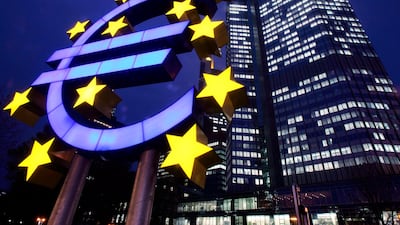The euro sank below $1.10 for the first time since May 2017 amid low liquidity on a late-summer trading session and the expiration of options contracts.
The common currency lost as much as 0.7 per cent against the US dollar, getting as low as $1.0985. The sell-off picked up dramatically around the time the derivatives expired at 11am in New York on Friday.
With US markets closed on Monday for Labour Day, traders may have been hesitant to hold big positions ahead of a long weekend. This scenario is especially true with new US tariffs on China poised to take effect on Sunday and lingering concerns about unrest in Hong Kong.
“The direction of travel for world trade-industrial production is still heading south — which is a euro negative,” said Chris Turner, a foreign-exchange strategist at ING Groep, in an email.
The euro remained weak in early afternoon trading on Friday, sinking to its lowest point at 1:43pm in New York.
The common currency tumbled even after US President Donald Trump complained on Friday on Twitter about the dollar's strength and the euro's weakness, which makes American exports less competitive.
Meanwhile, Italian bonds fell as the country's political crisis took another twist with officials clashing as they attempted to form a new ruling coalition. This comes at a time when European Central Bank staff are working on a stimulus proposal for policy makers to consider at their September 12 meeting, amid rising expectations the institution will cut interest rates further below zero and consider fresh asset purchases.
Traders also executed stop orders on Friday to sell the euro as it weakened, helping to accelerate the move lower.
Brad Bechtel, a strategist at Jefferies, said there were stops through the prior August lows and then again through $1.1000. Traders execute stop orders at predetermined levels to curb losses.

